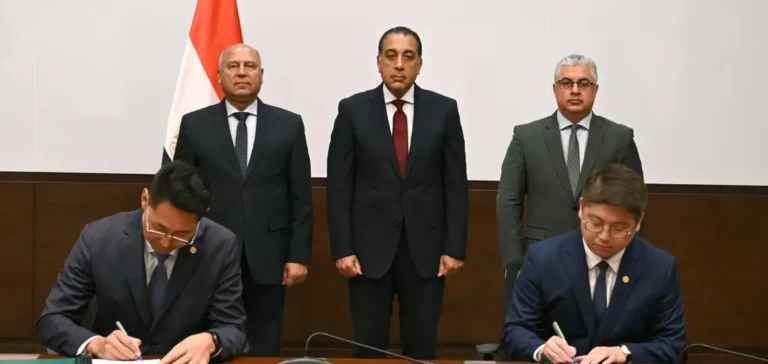Egypt has launched construction of a new industrial complex dedicated to the production of photovoltaic solar components in the Suez Canal Economic Zone (SCZONE) at Ain Sokhna. Covering an area of 20 hectares, this infrastructure aims to establish a complete local industry, ranging from solar module assembly to the manufacture of silicon and wafers, essential components for photovoltaic cell production.
Two phases for a strategic investment
The project is backed by a $200 million investment entirely funded by the Chinese company Sunrev. Its development is structured in two distinct phases. The first phase involves the installation of industrial units dedicated to the assembly of photovoltaic modules. The second phase will include setting up production lines for local manufacturing of silicon and wafers.
This new initiative is part of the ambitious strategy pursued by the General Authority for the Suez Canal Economic Zone, an autonomous public entity responsible for the economic, industrial, and logistical development of this region. The zone benefits from logistical advantages, including direct connections to six ports, road and rail infrastructure, and a strategic location linking the Mediterranean to the Red Sea.
Economic incentives and attractive business environment
To attract significant investment in targeted industrial sectors, the SCZONE offers competitive fiscal and customs advantages. Additionally, it simplifies the regulatory framework for businesses operating in the area. These incentive mechanisms are designed to attract more industrial projects, particularly in renewable energy sectors.
To date, the SCZONE has signed contracts worth more than $64 billion in clean energy sectors, notably for developing green hydrogen, solar, and wind energy projects. The zone also offers more than 460 km² of available land, coupled with climatic conditions suited to solar energy production, particularly in the Gulf of Suez region.
Regional and international export potential
Once operational, the Ain Sokhna solar complex is expected to export solar modules worth approximately $300 million annually. The site’s strategic location provides an ideal position to serve markets in Africa, the Middle East, and Southern Europe. This ambition aligns with Egypt’s goal of enhancing its energy security amid a recent notable decline in national natural gas production.
The Ain Sokhna project thus represents a tangible step within Egypt’s industrial strategy aimed at reinforcing domestic manufacturing capacities for advanced energy technologies. The anticipated exports of locally produced modules underscore the economic and strategic importance of this initiative for the country.






















